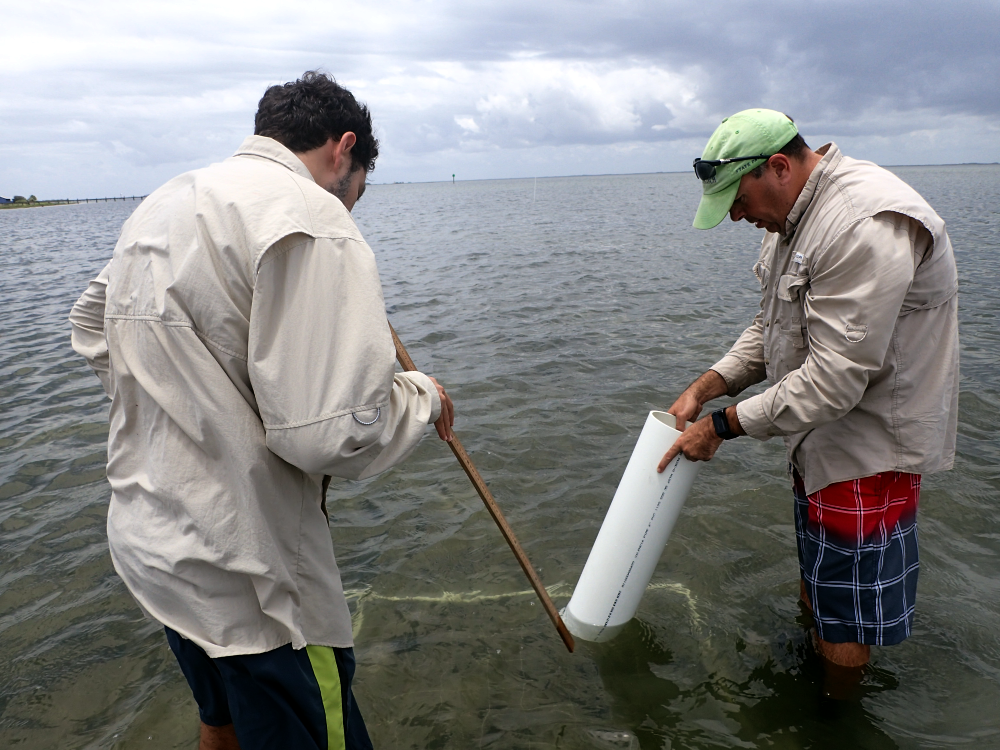Quick Start
-
save_alt
Seagrass Biomass Cores Protocol
-
save_alt
Seagrass Biomass Lab Datasheet
-
save_alt
Seagrass Biomass Data Spreadsheet
Overview
Seagrasses exist both above (shoots) and below (rhizomes) the sediment interface, and the relative allocation of resources (biomass) between these two domains is an indicator of resource availability and seagrass health. For example, seagrasses can store extra nutrients in their rhizomes during periods of high nutrient availability for later mobilization (i.e., ‘luxury consumption’). Moreover, there is a rich community of infaunal organisms that may directly or indirectly contribute to the success of seagrasses. Bioturbation by mobile infauna can aid in nutrient cycling and seed burial, for example. Biomass cores sample both the above- and belowground aspects of seagrasses as well as associated infauna. Cores are low-cost and relatively easy to take, but are destructive and require significant post-processing effort. However, the links between seagrasses and infaunal organisms are largely unexplored relative to other aspects of the community, and thus are a key frontier in seagrass ecology.

Measured Parameters
- Above- and belowground seagrass biomass (mg)
- Infaunal abundance (individuals)
Selected Literature
Blackburn, N. J., & Orth, R. J. (2013). Seed burial in eelgrass Zostera marina: the role of infauna. Marine Ecology Progress Series, 474, 135-145.
Douglass, J. G., Douglass, J. G., France, K. E., France, K. E., Richardson, J. P., & Duffy, J. E. (2010). Seasonal and interannual change in a Chesapeake Bay eelgrass community: insights into biotic and abiotic control of community structure. Limnology and Oceanography, 55(4), 1499-1520.